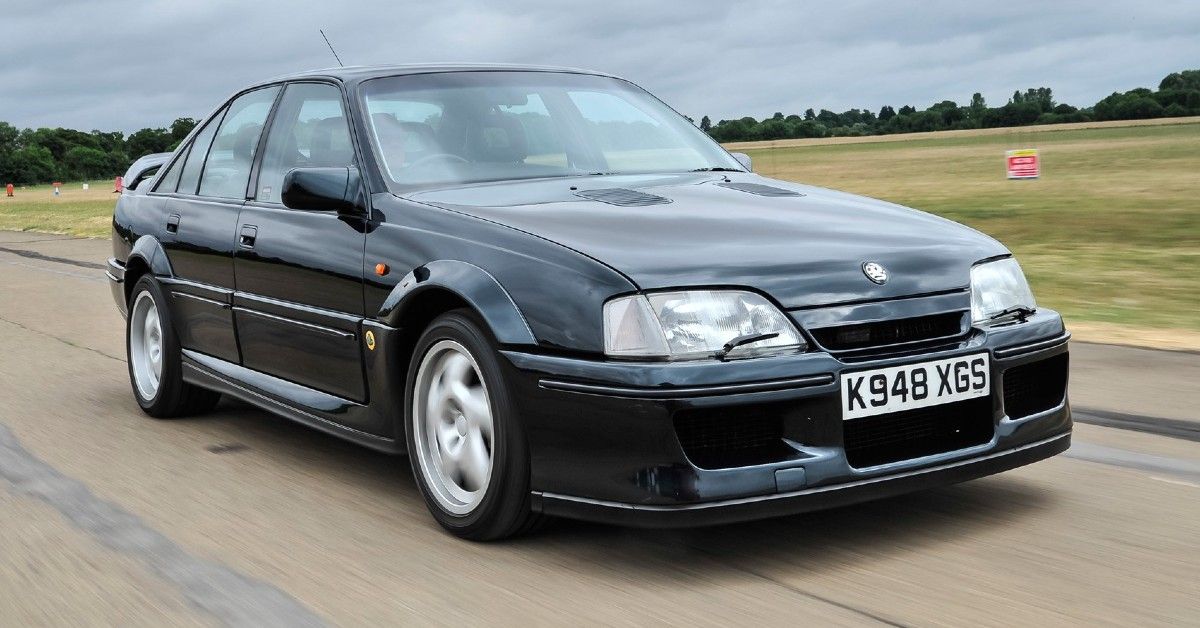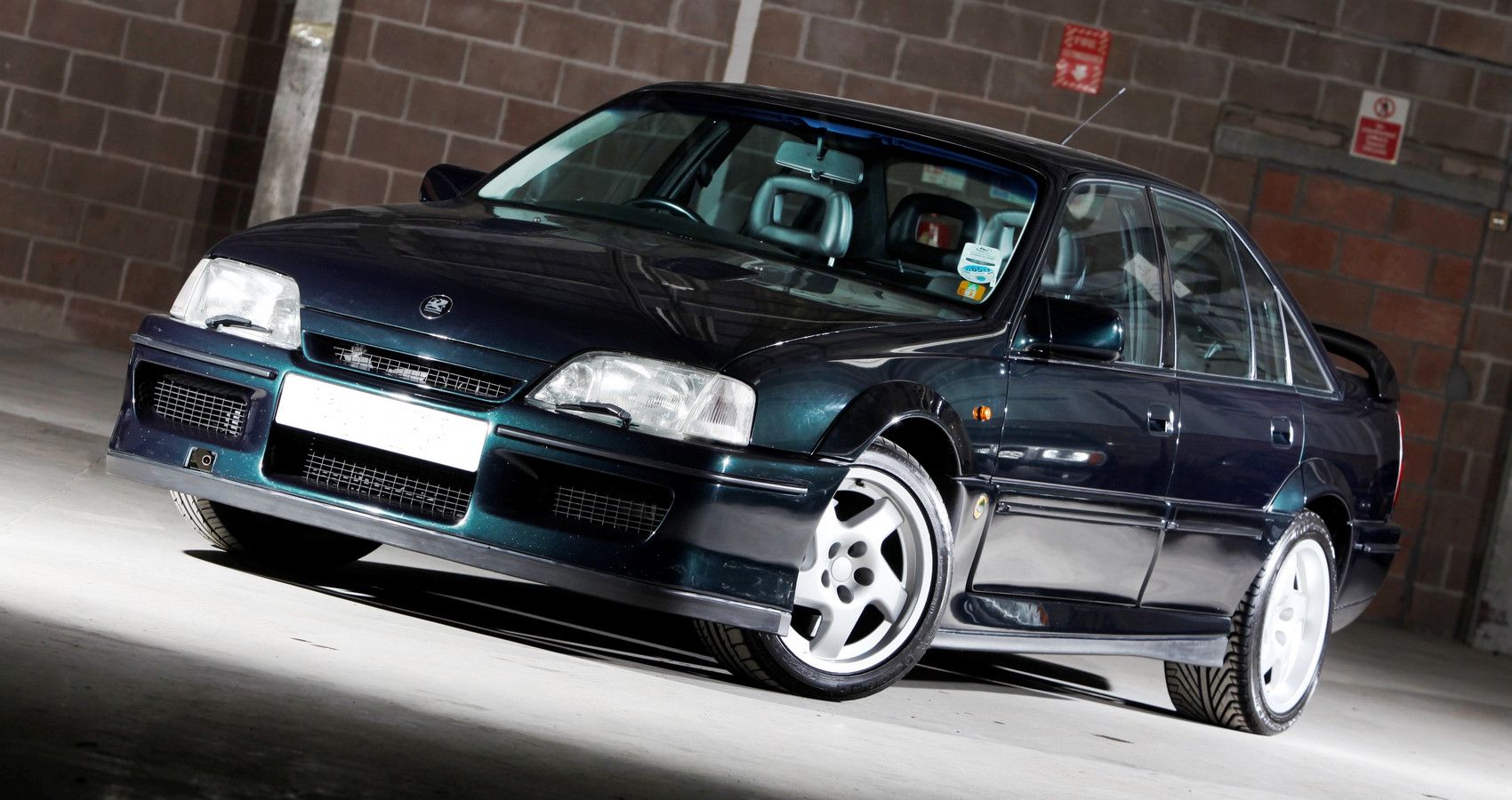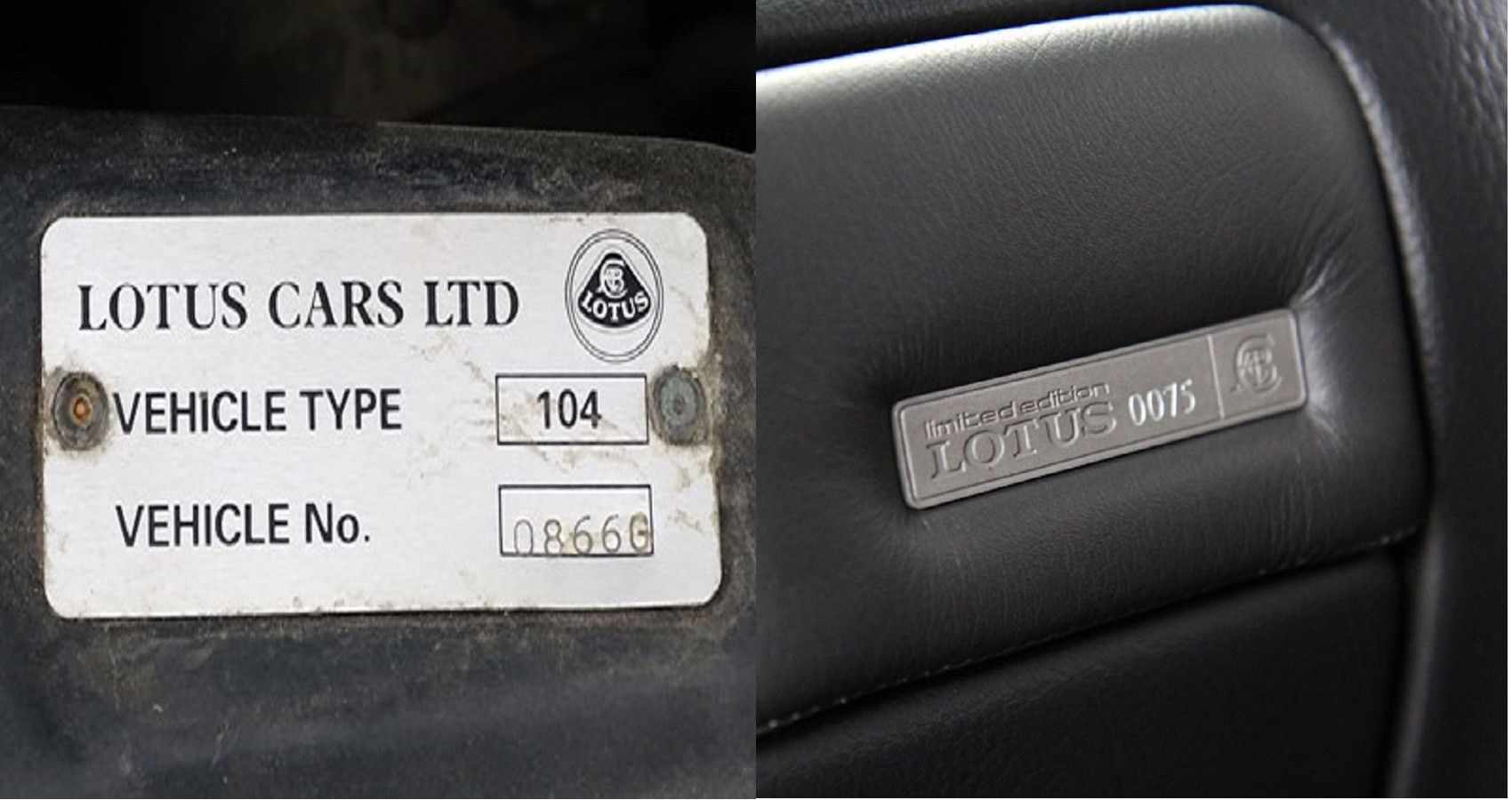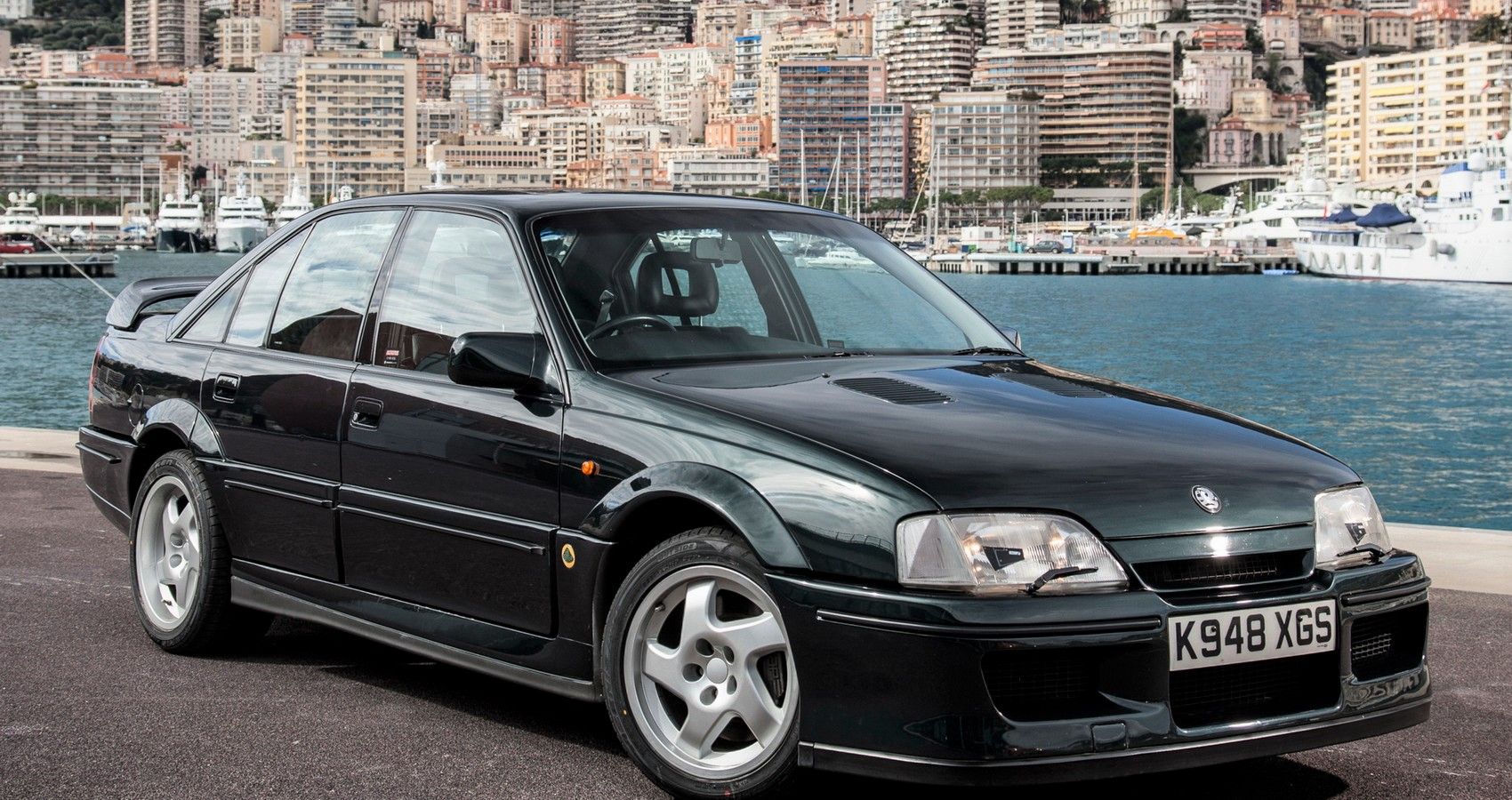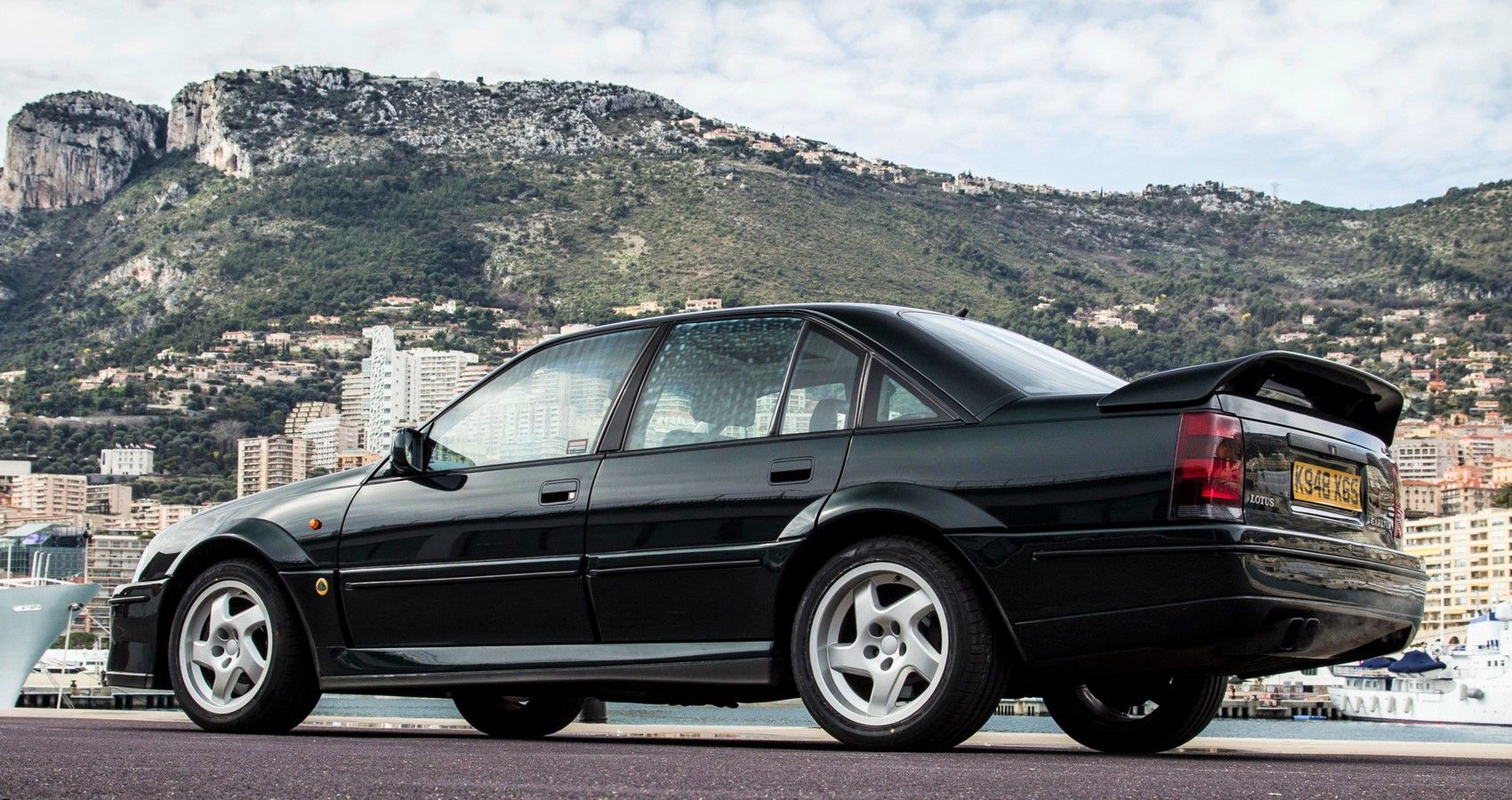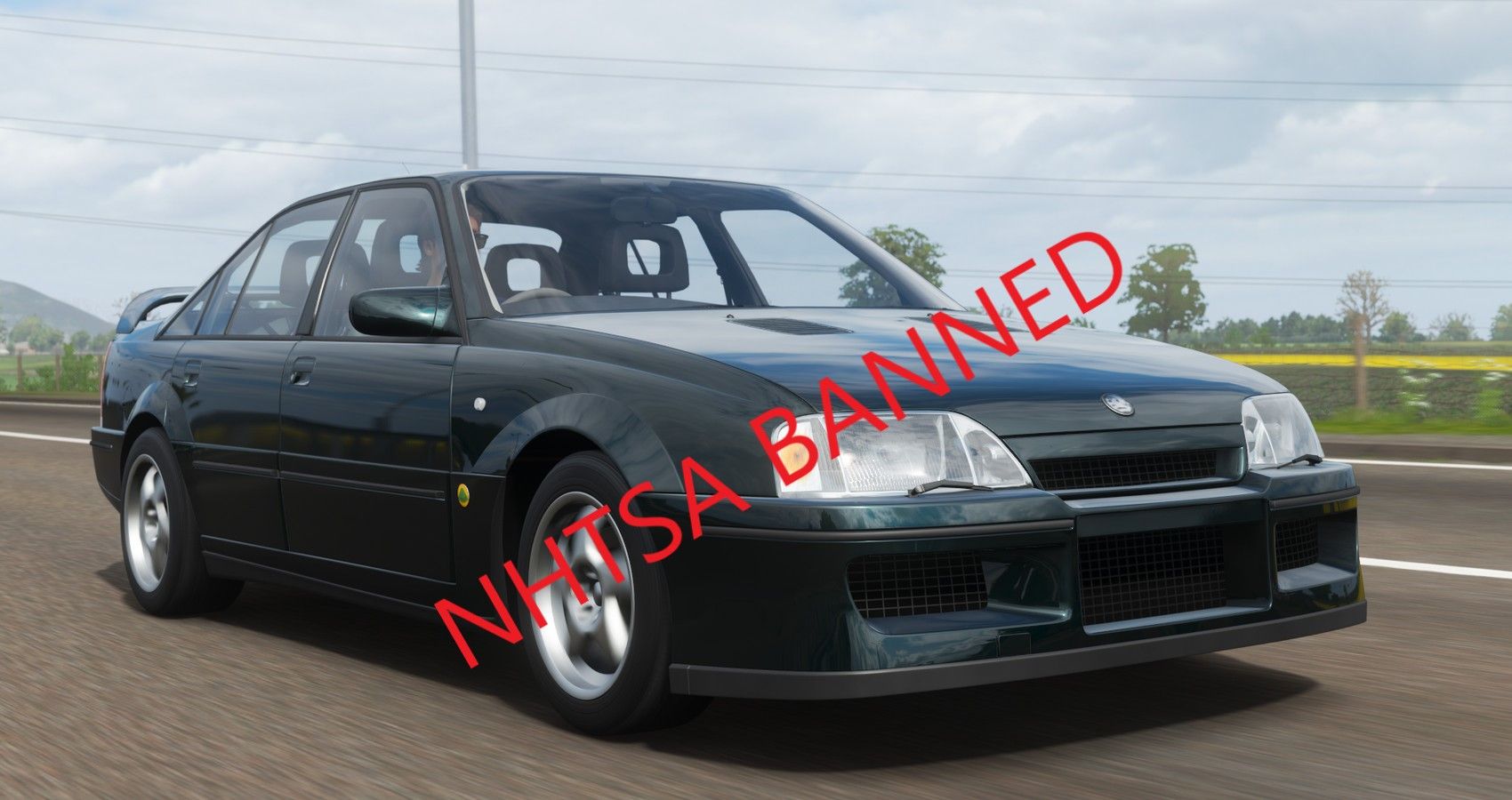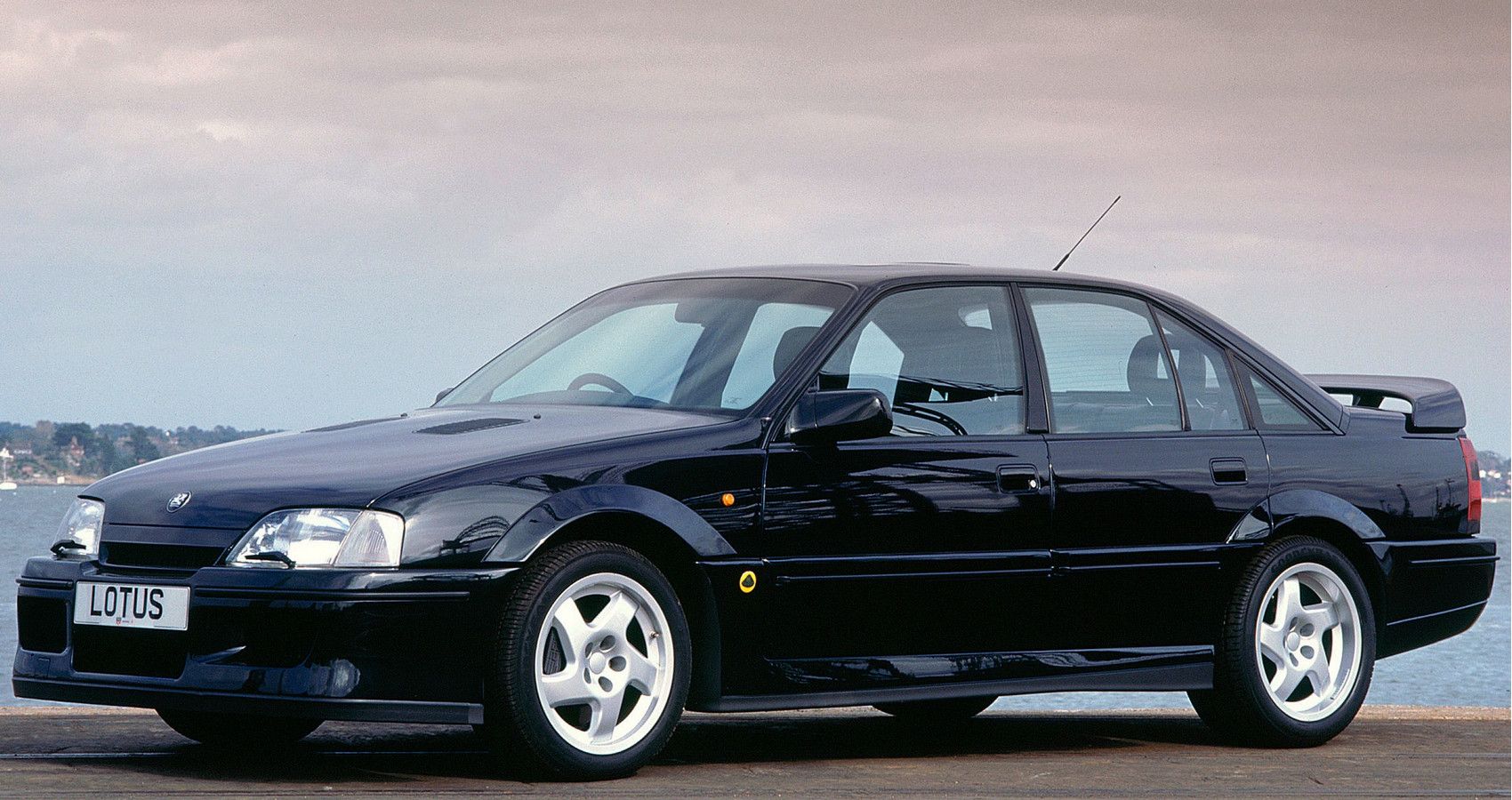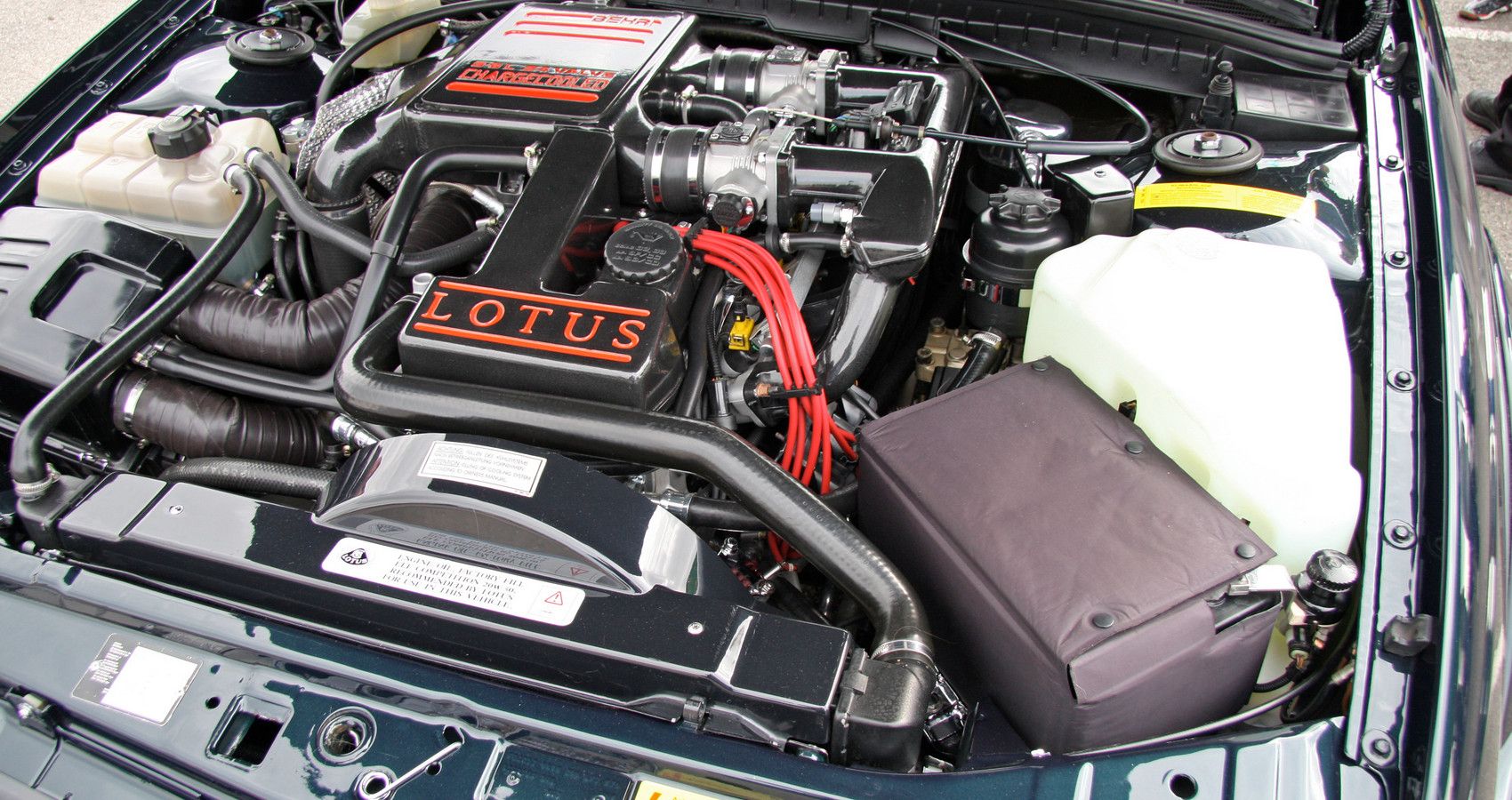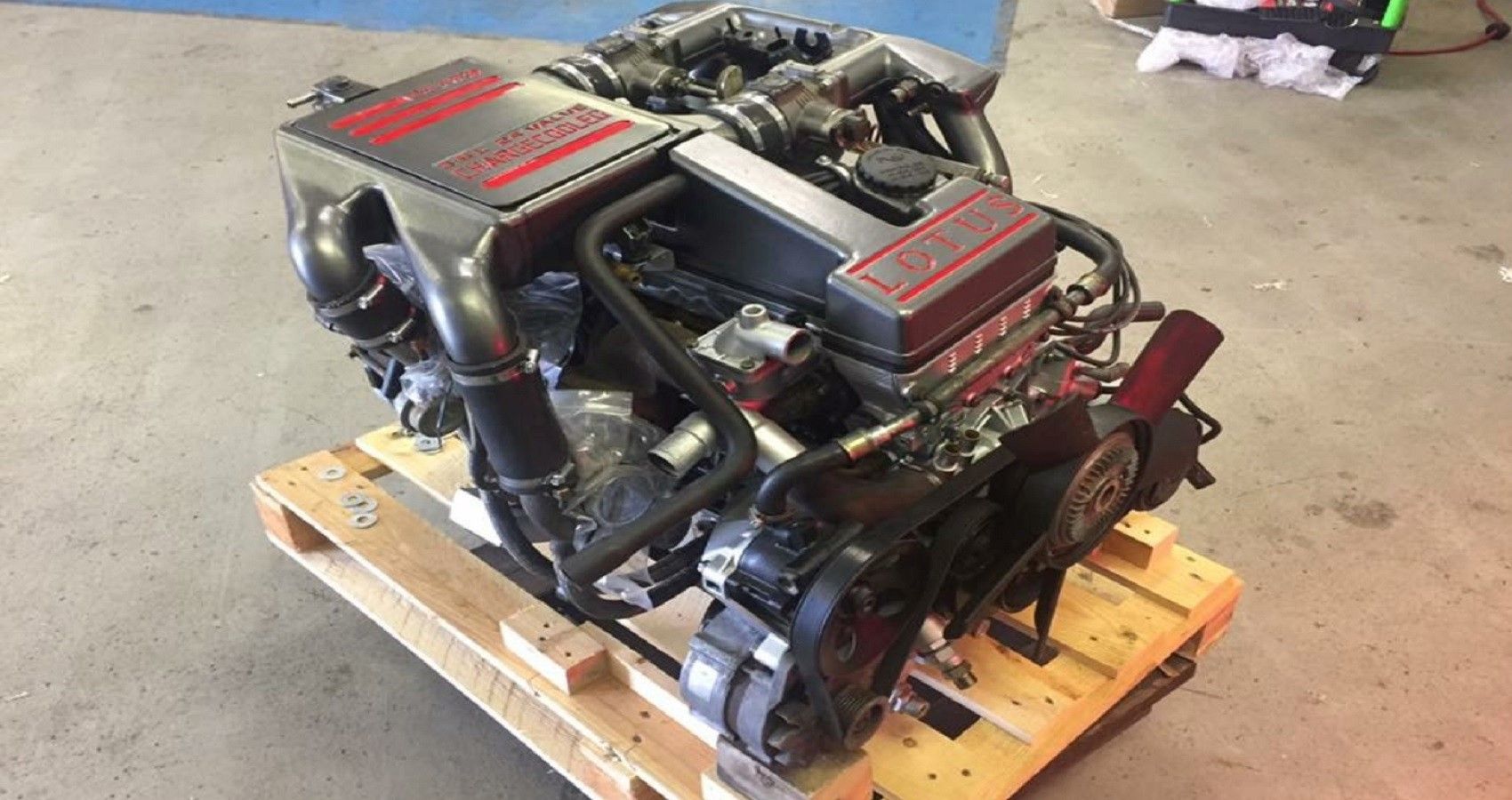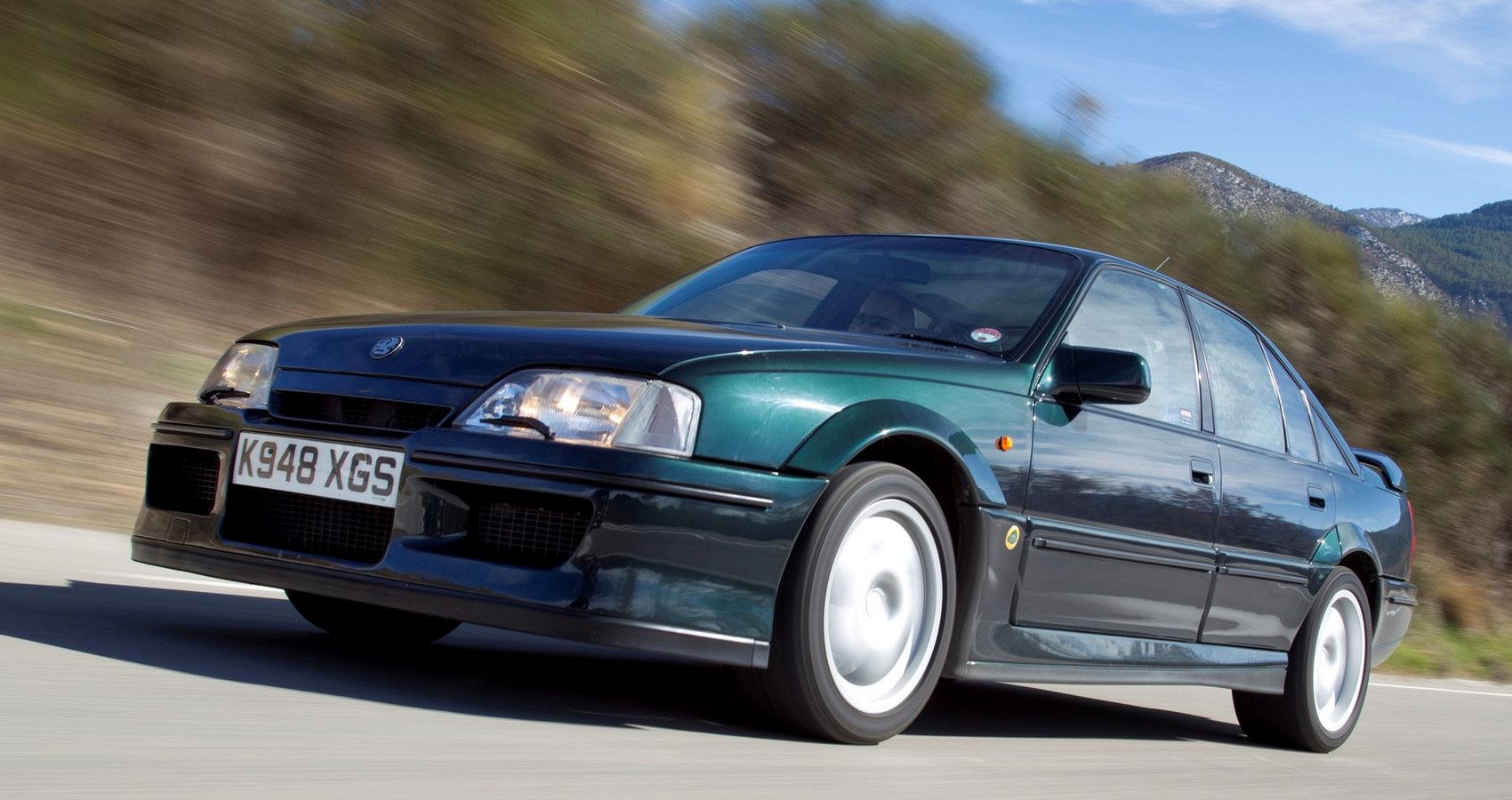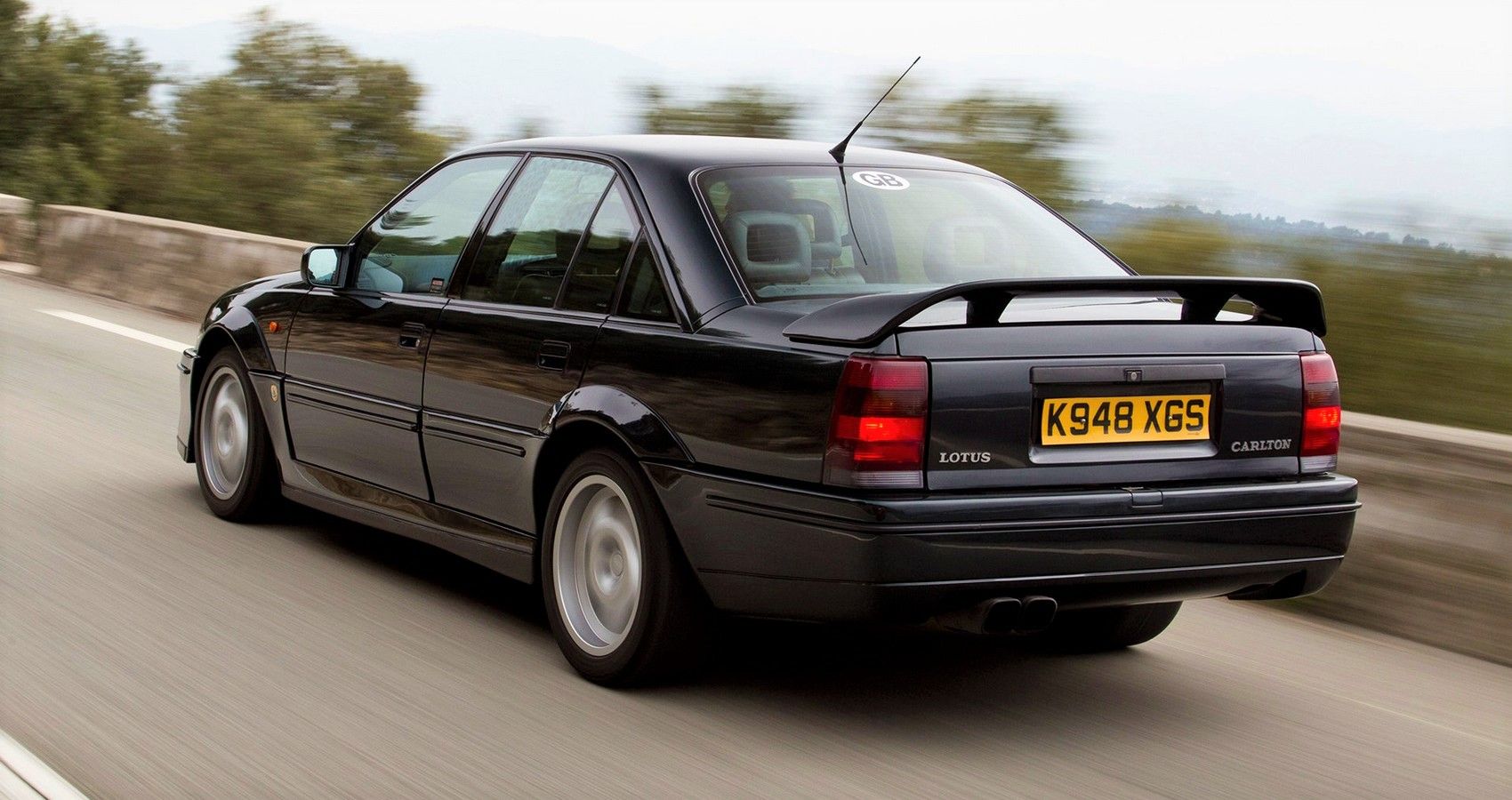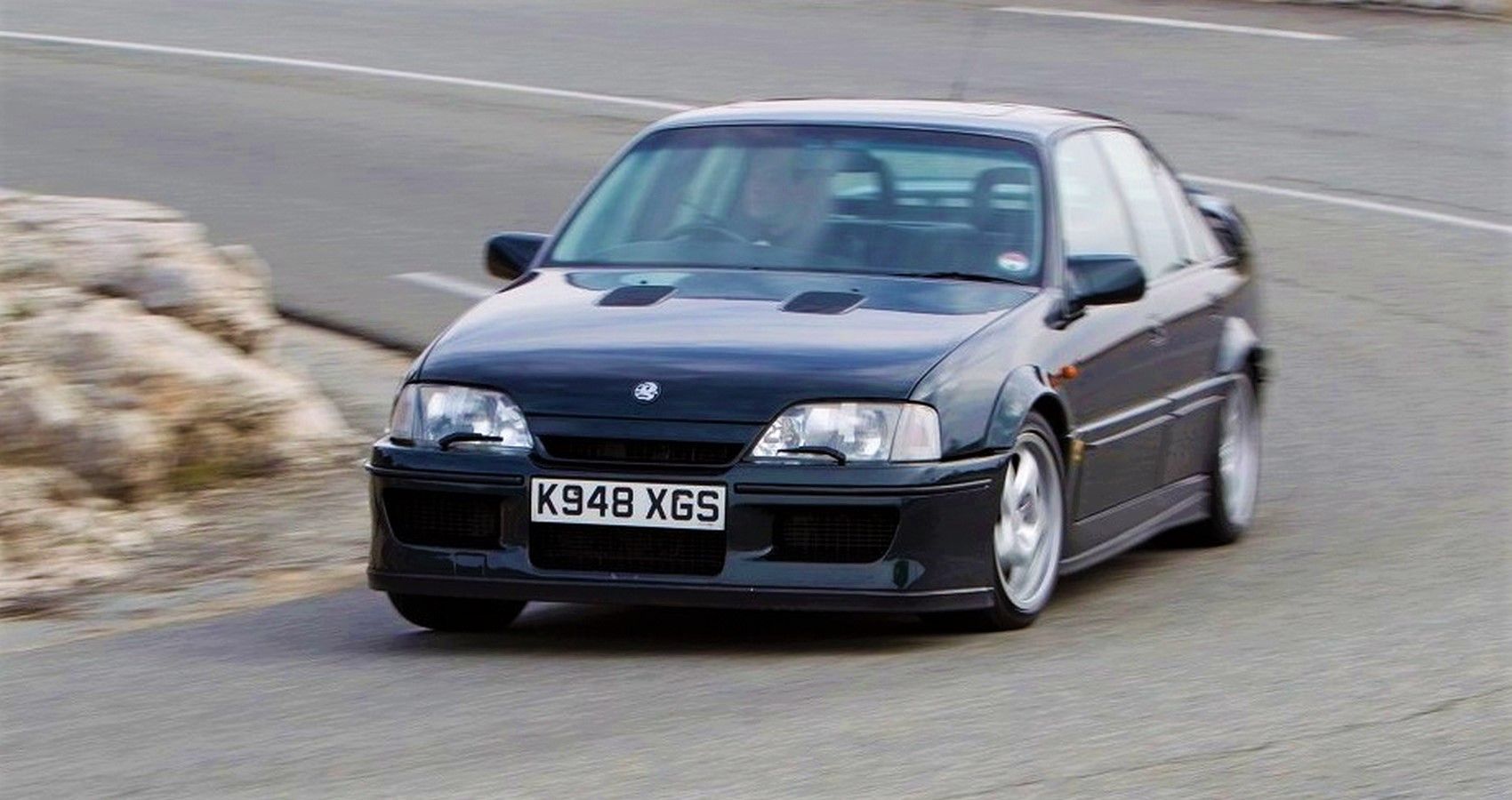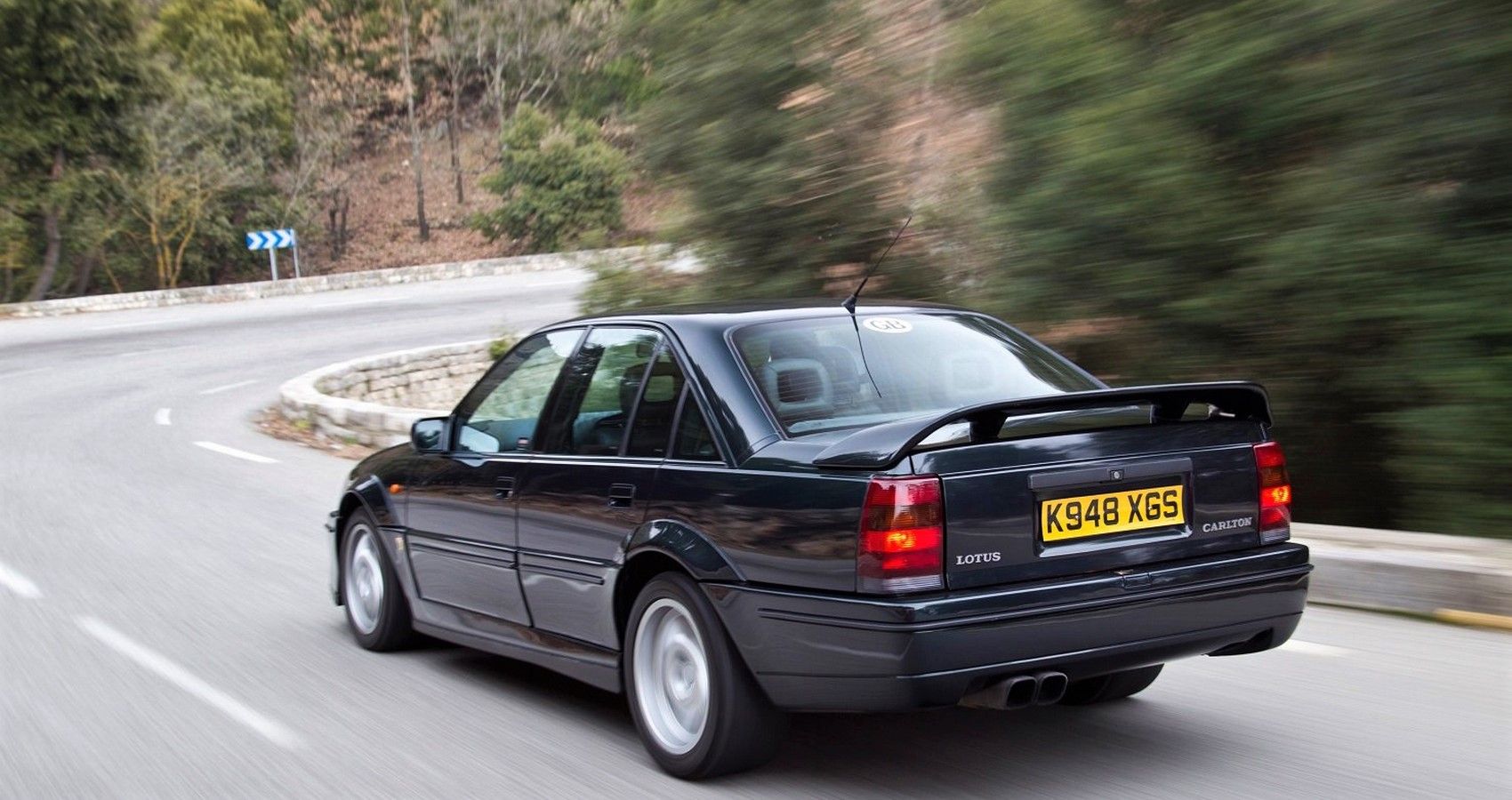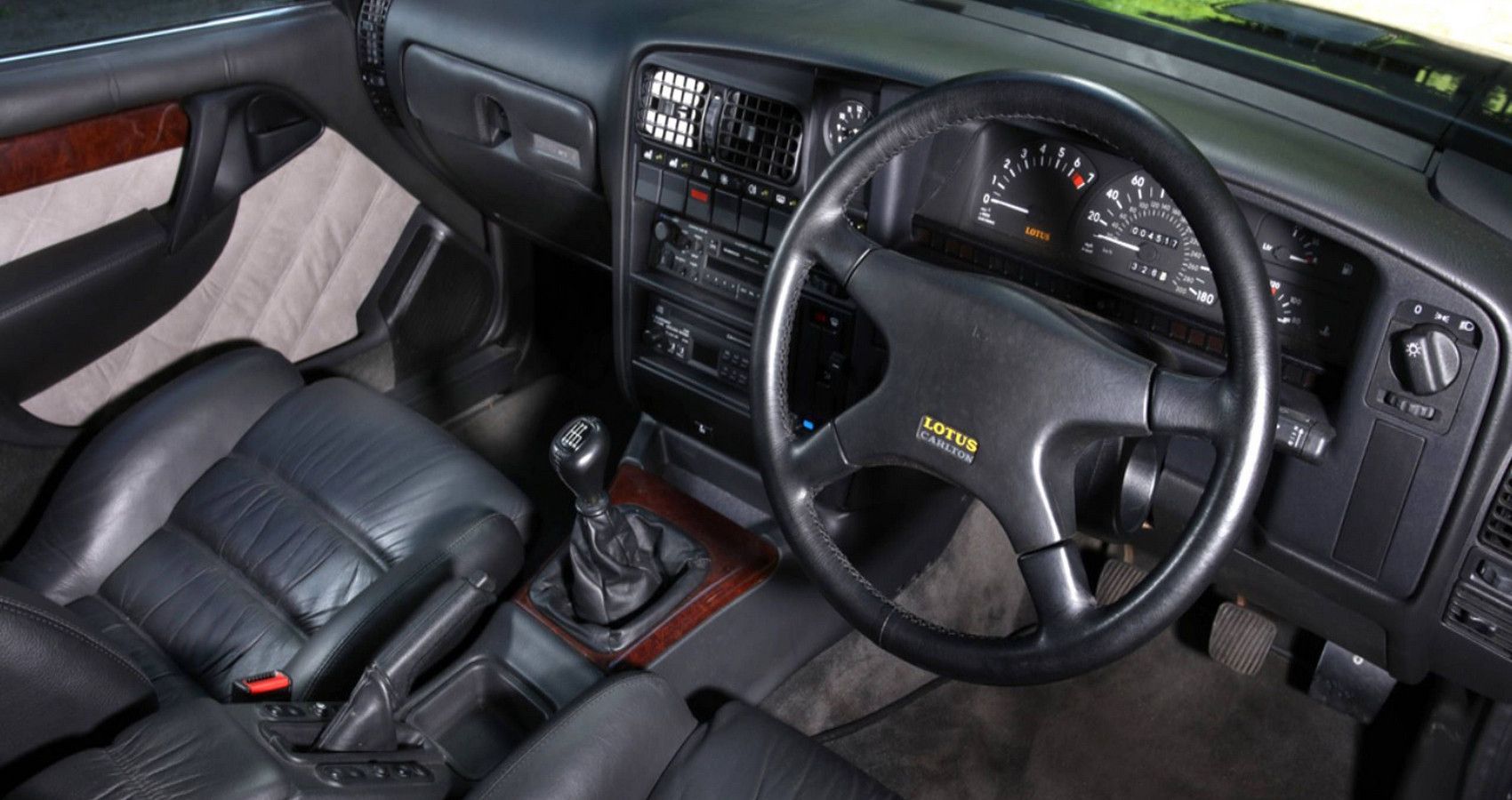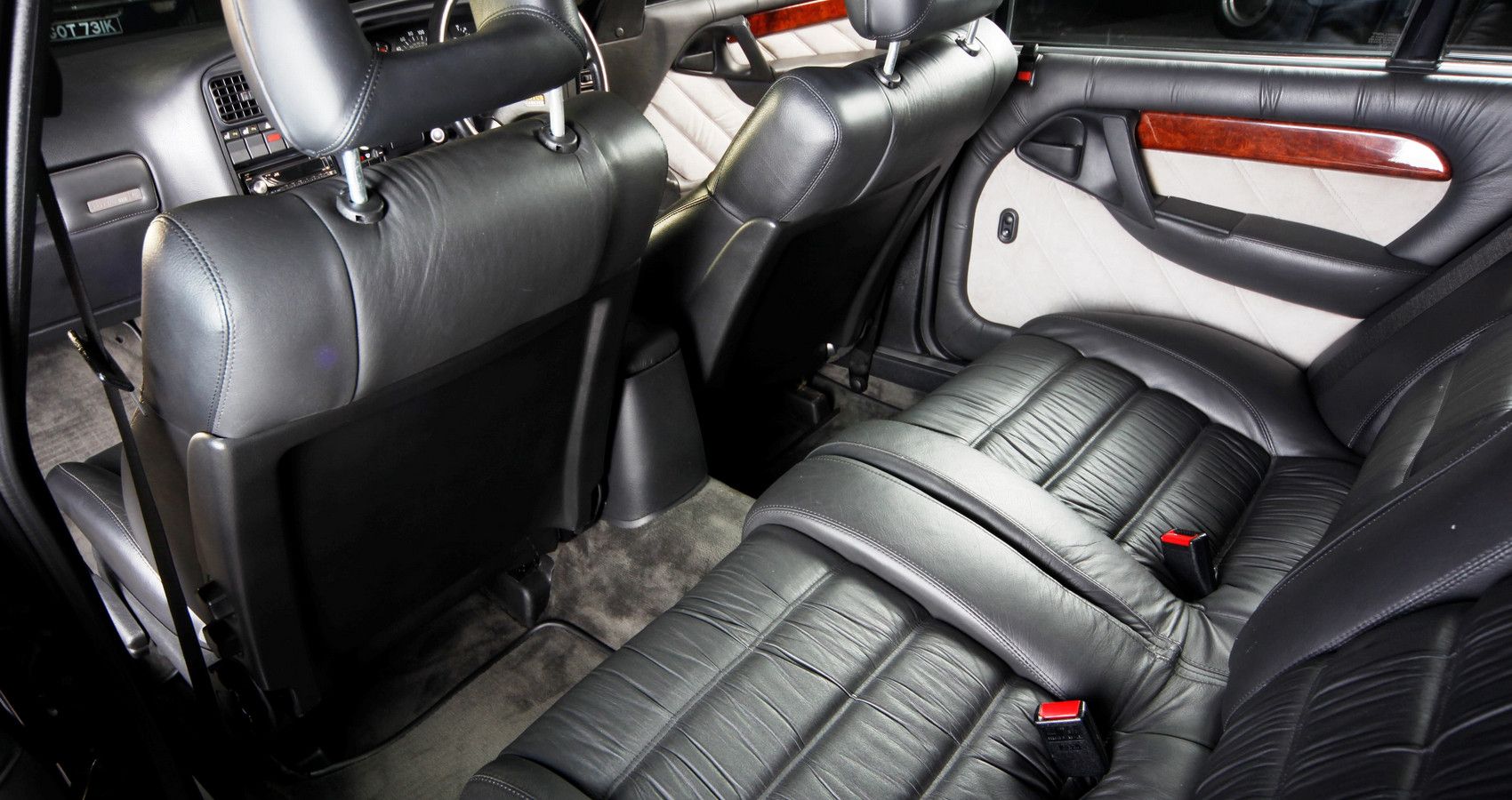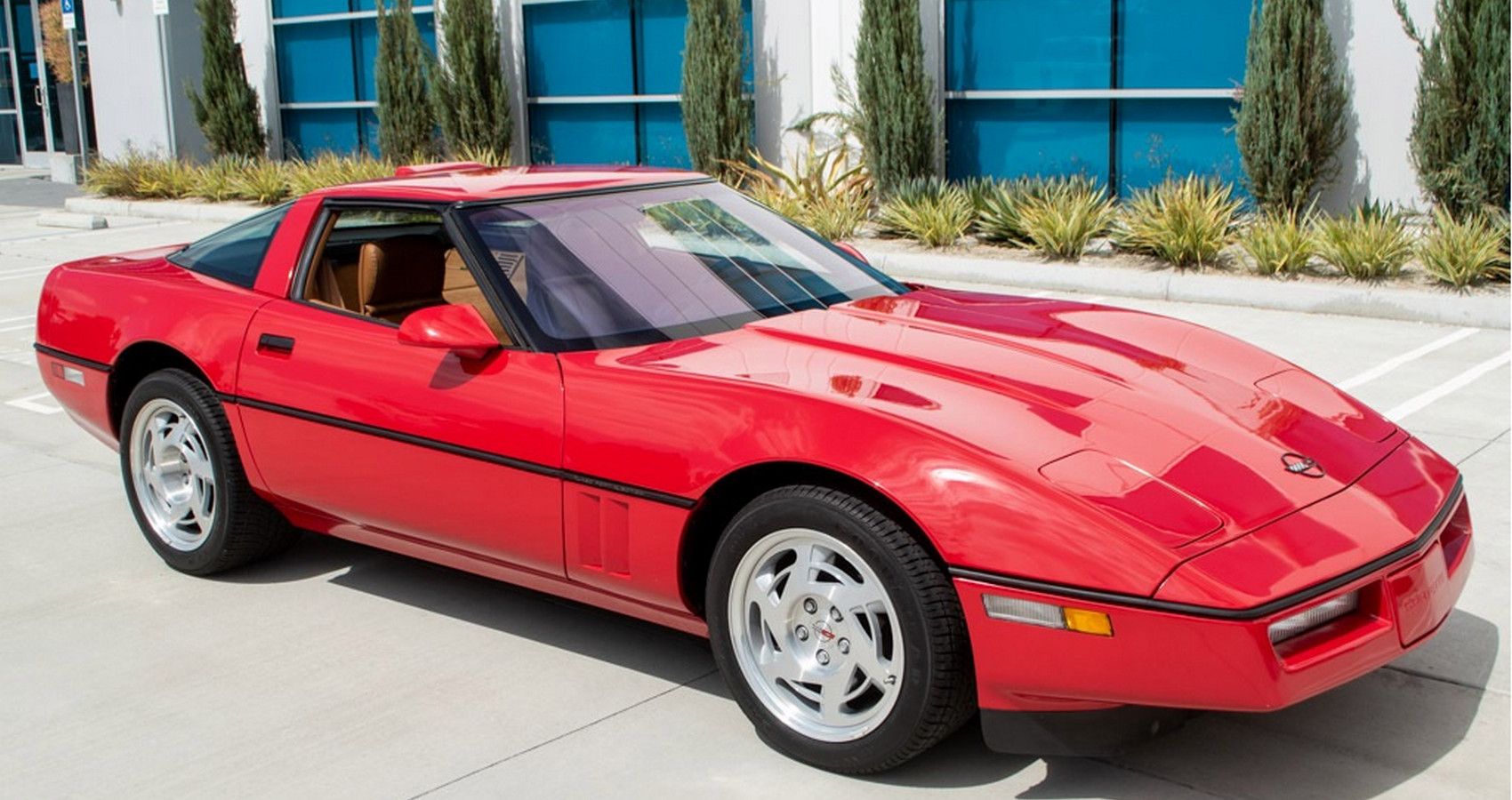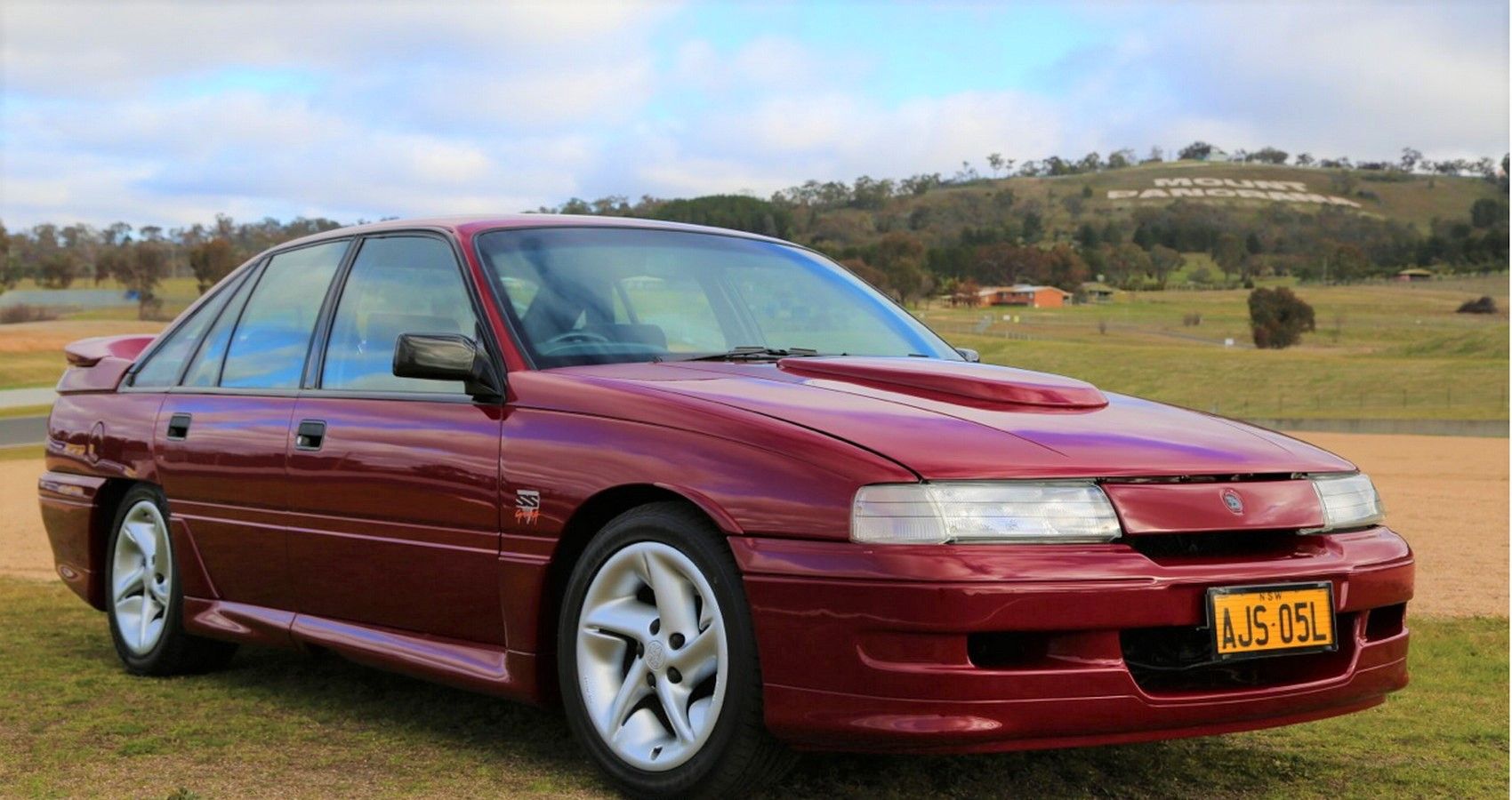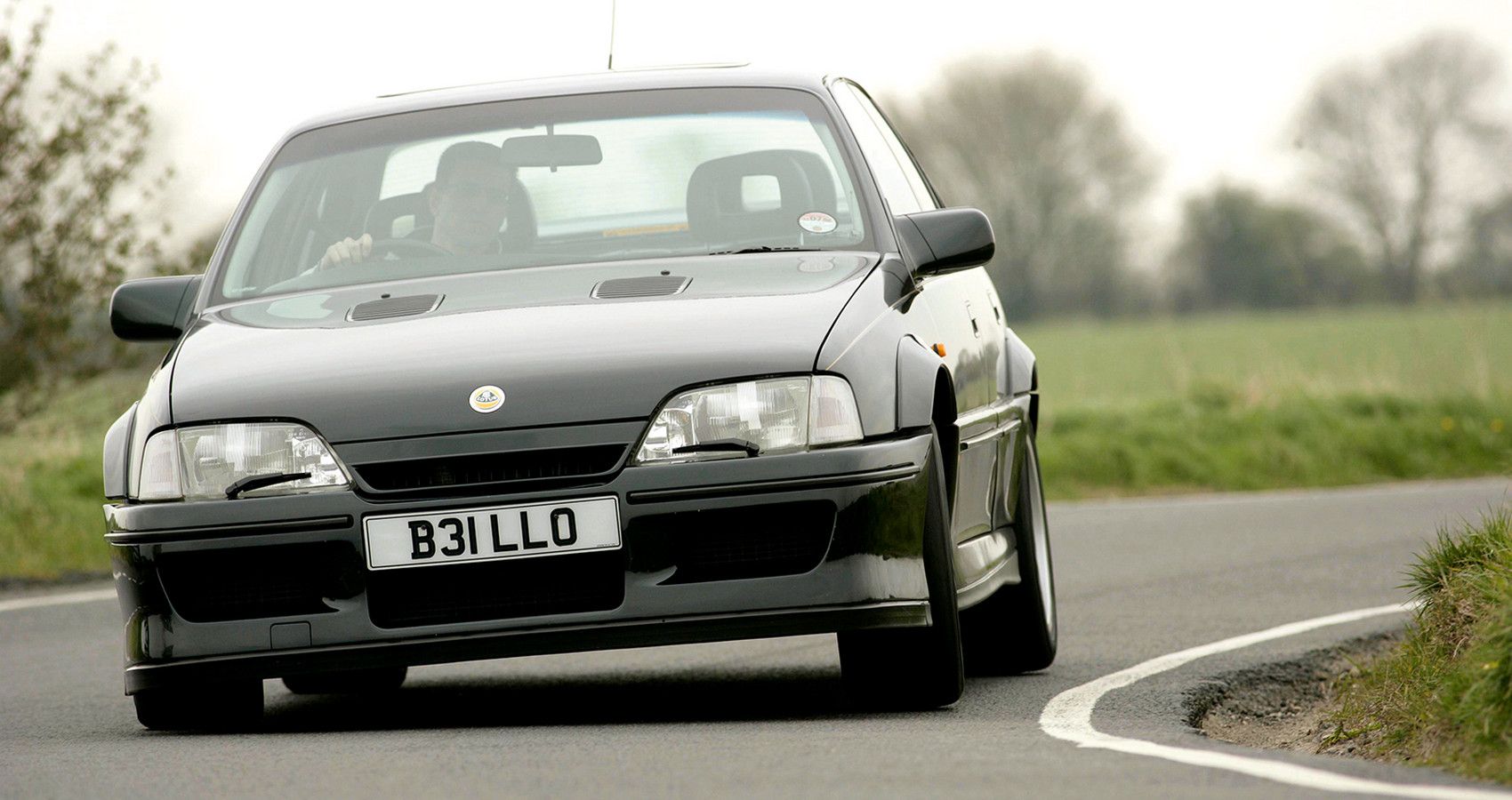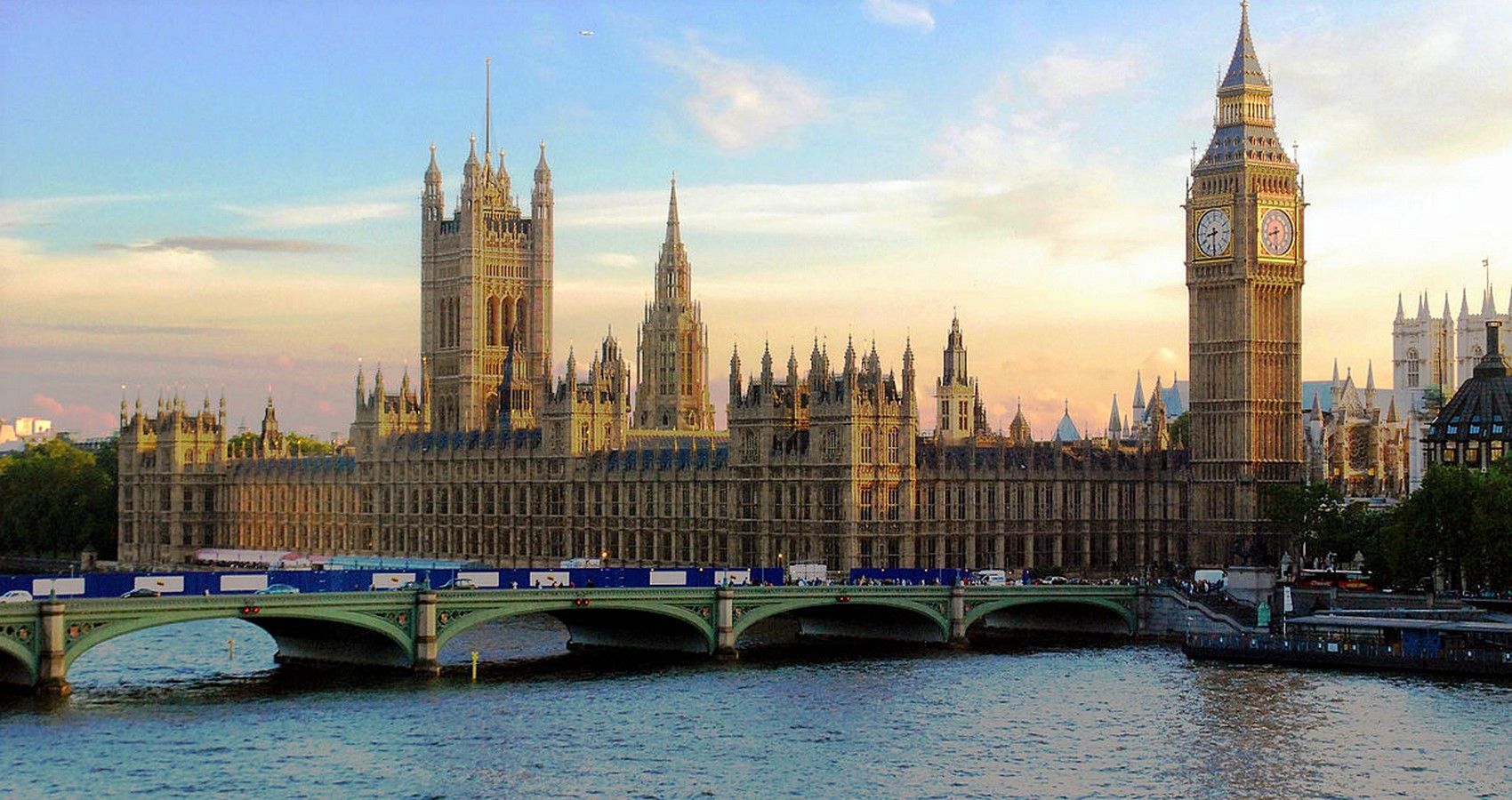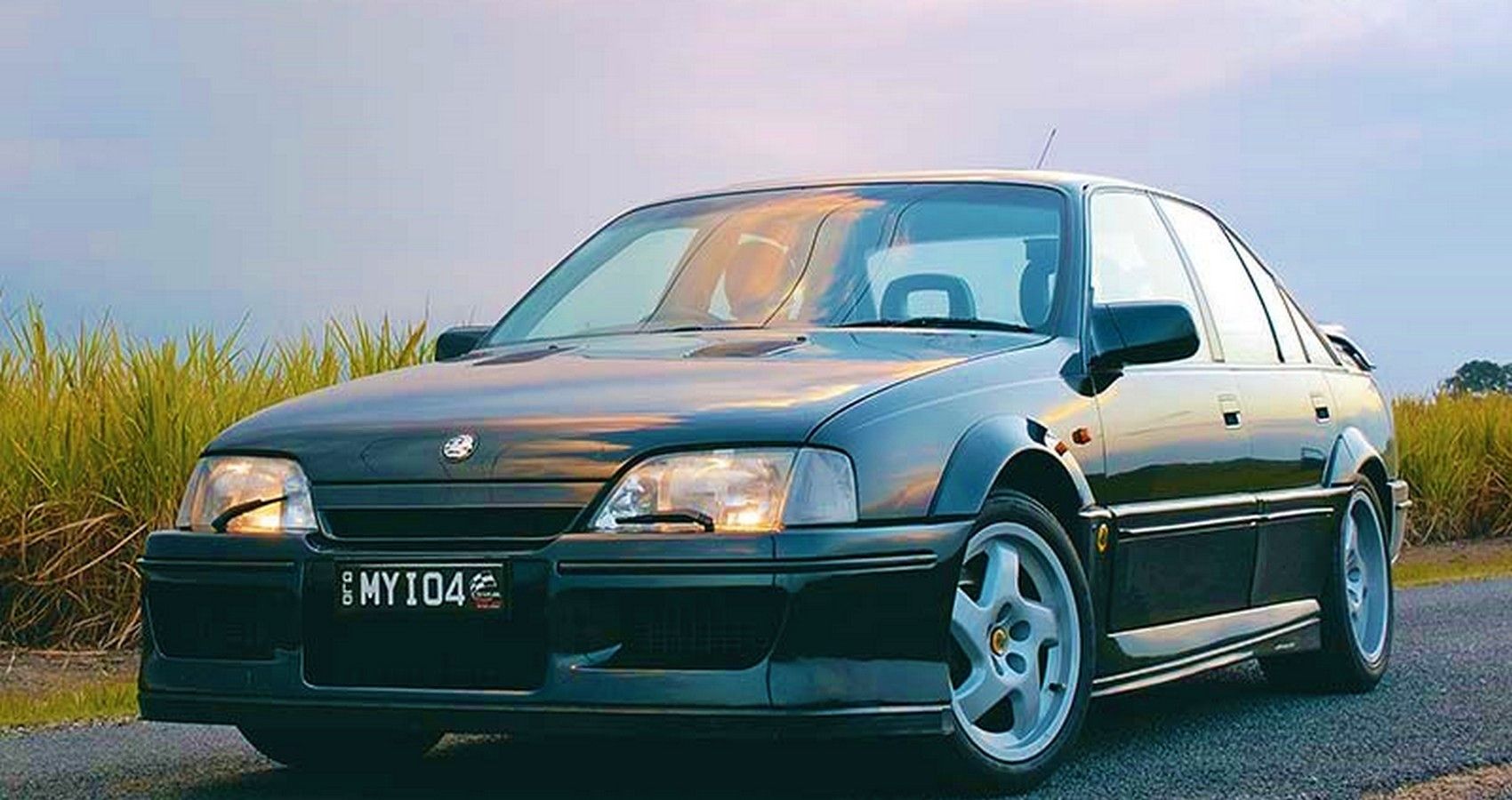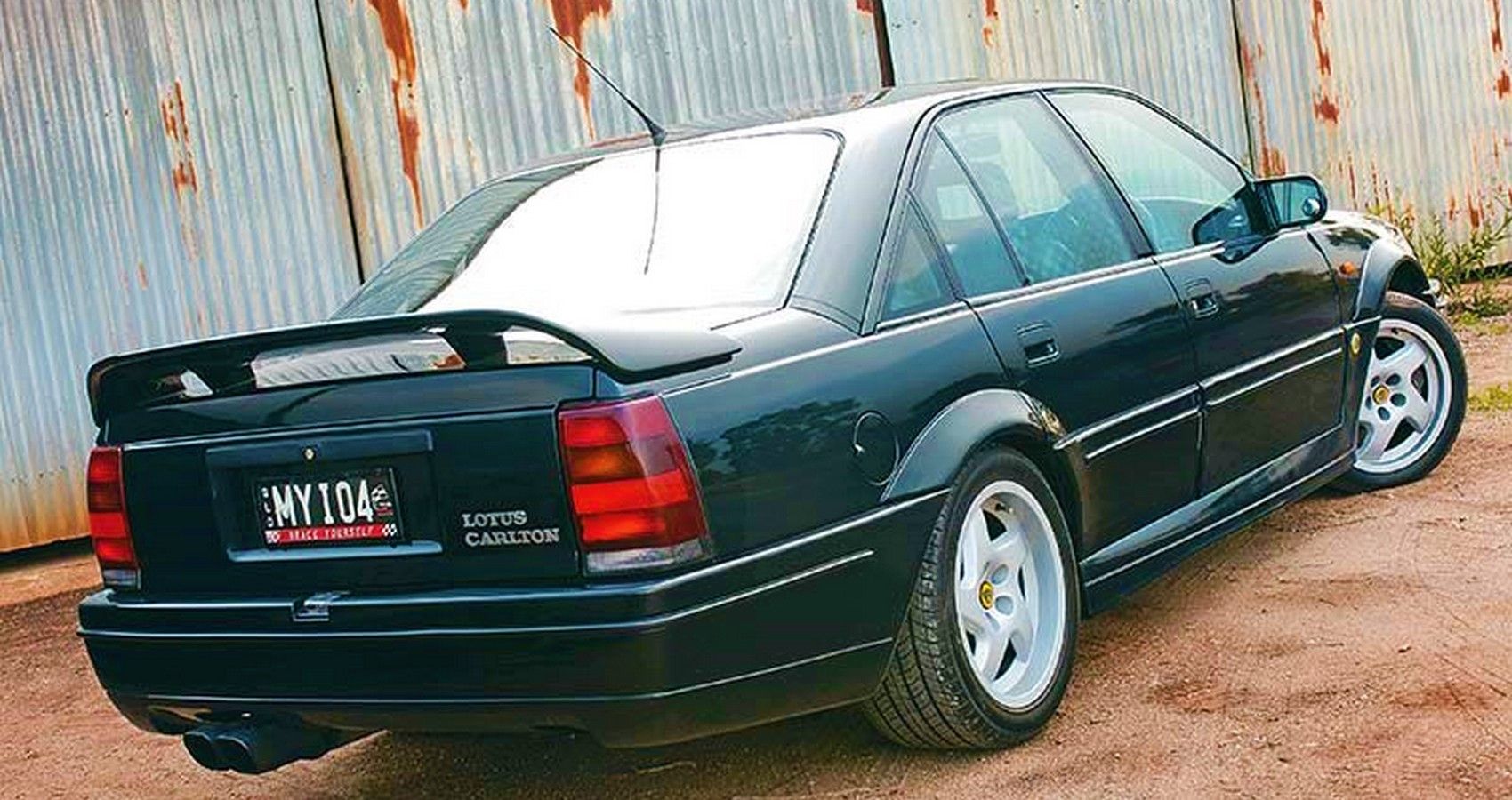Often viewed as the controversial supercar that had no place on public roads, the Lotus Carlton was, however, ground-breaking. Up until its launch, no other production car delivered this much usable performance with the minimum of fuss.
Vauxhall isn't the first name that springs to mind when you think of fast cars. However, with GM funding and Lotus engineering know-how, an unlikely collaboration of international brands, the automotive world was in for a real shock in 1990 when production started. A mass-produced executive sedan that, despite being a capable performer, wasn't exactly exciting, but the addition of a body kit, bigger wheels, and huge injection grunt resulted in a serious rival for anything BMW and Mercedes could muster.
A hugely successful launch gradually faded over the following two years, Europe entering a recession impacted sales that affected demand, and a lack of sales forced GM to prematurely end production, falling short of the originally intended production run of 1100 cars.
The fastest and possibly greatest sleeper car of all time was gone. Over time, gearheads forgot about this amazing super sedan, leaving a handful of enthusiasts to keep the memories alive.
10 Limited Edition Lotus Type 104
GM's ever-increasing stake in Lotus Cars would eventually result in a complete takeover of the beleaguered UK sports car manufacturer. But once complete, how to showcase the brand's engineering expertise? Lotus having already worked on the Corvette ZR-1 needed a bigger more public engineering exercise, and so the Lotus Carlton was born.
Only 950 examples of the initial planned 1100 examples were completed, marketed as the Lotus Carlton in the UK, adopting Opel branding in other key markets. Although instantly recognizable as the Carlton, internally Lotus, true to their heritage, issued the uber sedan its type 104 designation.
9 Pick Any Color You Want, As Long As It's...
Picky any brand of performance car and there will be a host of regular colors. Ferraris are typically red, for Lamborghini, anything lurid yellow or green seems to work well, but what the buyer wants is normally what they get, after all, premium cars are tailored to specific tastes.
When Lotus and General Motors teamed up for the world's fastest four-door sedan, color choice was never an option, only offered in a single paint scheme, which most gearheads incorrectly assumed was black. Actually, all Lotus Carltons left the factory finished in Imperial Green, a much darker take on traditional British Racing Green.
8 Not Available In The US
Under GM ownership and boasting supercar-rivaling performance, the Lotus Carlton was pretty much widely acclaimed in every market, except with American buyers. General Motors, despite owning both brands, never bothered with federal approval, making the Lotus Carlton essentially illegal to own or drive in the US.
Over time, things have gotten a little easier, in 2011 the NHTSA permitted gray imports under the show and display exemption rules.
7 Opel Engine, Lotus Engineering
If, on the outside, the Lotus badges are a little too subtle, leaving gearheads to wonder if this is the real deal, then lifting the hood should allay any concerns of authenticity. Sitting atop the Opel straight-six, a custom-designed induction system proudly displays the Lotus branding.
Starting with a standard GM 3-liter motor, Lotus first increased the bores to a larger 3.6-liter displacement, fitting a forged performance crankshaft, Mahle pistons, and Lotus-designed connecting rods. On the outside, more noticeable updates, twin Garrett T25 turbochargers combined with a Behr intercooler set-up raised output to 377 hp.
6 Super Sedan Performance
In the early '90s, only proper supercars were faster than the Lotus Carlton, with a top speed of 177 mph and and equally impressive 0-60 mph time of 5-seconds, few cars could keep up with the big four-door sedan. Further independent road tests would later better those claimed performance figures, with a sub-5-second sprint to 60 mph easily achievable.
Putting those incredible achievements into context, booth Ferrari's 348 and Porsche's 911 Carerra 4 were slower to 60 mph needing 5.2 and 5.1-seconds respectively, even flat-out, owners of either would be left eating the Lotus Carlton's dust.
5 Manufactured In Germany, Reassembled In England, Tested In Italy
Fresh from the assembly lines in Germany, completed Vauxhall Carltons were shipped to Lotus Engineering's facility in England to be stripped back to the bare chassis. Engines and transmissions would be sent back to the Opel factory for use in further production. Once assembled in the UK, Lotus headed for a warmer climate for a lengthy testing regime.
Nardo in southern Italy was chosen for its high-speed banked circuit layout that permitted flat-out testing, giving Lotus valuable insight into both engine and aerodynamic performance. These high-speed test sessions played a vital role in finalizing Carlton's production specification, updated front and rear aerodynamics being the most obvious, but under the skin, excess heat led to the addition of numerous oil coolers.
4 Well Appointed Interior
Climbing into either row of seats wouldn't be a step into a lightweight, stripped performance car like many had expected. Remember, GM had already aimed the Carlton at middle to upper business execs who demanded all the trimmings of premium brands.
Lotus didn't do much on the inside, aside from the almost mandatory leather-trimmed bucket seats up front and a handful of Lotus logos adorning the doors and steering wheel. Elsewhere, individually numbered plaques denoted where each car stood in the limited production run along with the Lotus name and logo.
3 Australian & American Connections
Built and engineered in the UK, the Lotus Carlton used a variety of "parts-bin" components from GM's global supply chain. After all, building a custom transmission and limited slip-differential would be a costly process when suitable items could be sourced easily and cheaply elsewhere.
Equipped with a 6-speed manual ZF S6-40 transmission lifted straight from Chevrolet's Corvette ZR-1, another Lotus refined GM performance car, sending all 377 hp to the rear wheels, with the Holden Commodore SS providing a beefed-up limited-slip differential.
2 GM Versus UK Government, Police, And The Press
Unsurprisingly, the Lotus Carlton would also capture the attention of undesirables, one notable instance involving the theft of a Lotus Carlton subsequently used in a series of ram raids. The UK Police at the time using standard Carlton's understandably couldn't keep up and never caught the perpetrators.
Grabbing the headlines as seemingly untouchable, several motoring organizations with the backing of the press lobbied the government for a sales ban, claiming it was too fast for UK roads. The Lotus Carlton then would be the only production car to be discussed in the houses of parliament. Fortunately, common sense prevailed and sales continued.
1 Prices Then And Now
Performance bargain or overpriced Vauxhall production car? Both sides have valid points. The Lotus Carlton launched at £48,000 or double the price of a standard Carlton, sure it had a more powerful engine and a smattering of Lotus tweaks, but was it really worth the asking price? Probably not, at least not until you look for the same performance in another brand, then it all makes sense.
Where does that leave the Lotus Carlton today? Despite the import issues, several have found their way stateside, where the Lotus connection and innocuous profile remains somewhat of an unknown among collectors. These reasons alone have helped to keep prices in the $30-$40,000 range, which considering the rarity and performance makes it one of the better-kept secrets.

